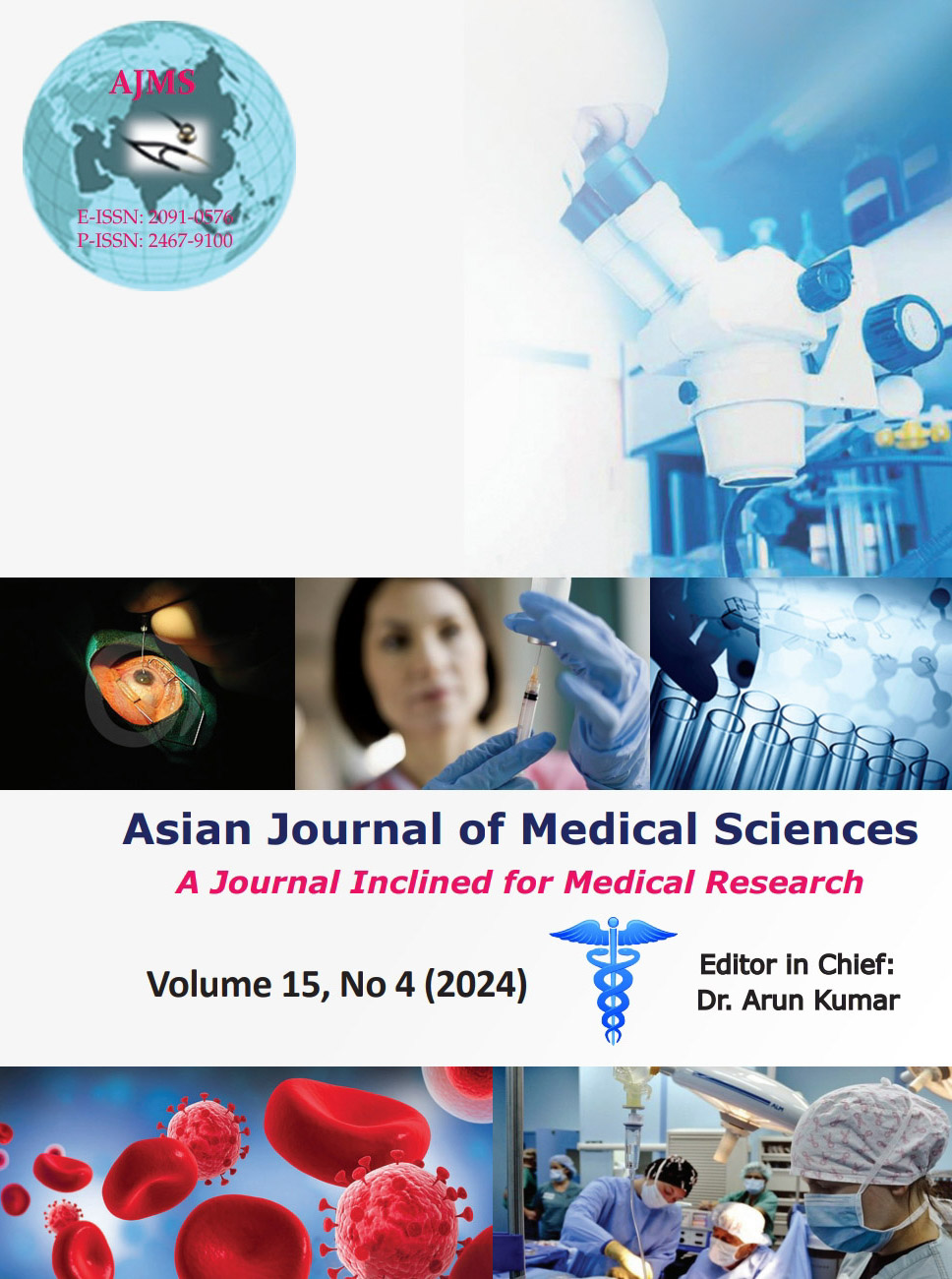Prevalence of Candida species and their antifungal susceptibility patterns among patients in tertiary care setting Butwal, Nepal: A cross-sectional study
Keywords:
Antifungal agents; Candida; CHROMagar; Fungal infections; Non-albicans CandidaAbstract
Background: Candida species, commonly present in the human body, can result in severe infections. Non-albicans Candida (NAC) species, with increasing antifungal resistance, pose a growing concern.
Aims and Objectives: This study aims to evaluate candidiasis prevalence and antifungal susceptibility in isolated Candida species among suspected patients at tertiary care hospitals in Butwal, emphasizing early identification and appropriate treatment to avoid unnecessary use of toxic antifungal drugs.
Materials and Methods: In a descriptive study on 303 patients with clinical symptoms of Candida infections, specimens underwent direct microscopic examination and culture on Sabouraud dextrose agar. Species identification involved phenotypic methods such as chromogenic character on CHROMagar Candida media, germ tube examination, and microscopic characteristics. Subsequently, isolated species were tested for antifungal susceptibility using the disc diffusion method.
Results: Among the 303 samples tested, 80 (26.4%) were positive for candidal infection. NAC species were the most commonly isolated, with Candida albicans and Candida krusei being the most virulent. The isolates exhibited the highest sensitivity to fluconazole (77.5%) followed by itraconazole (75%), whereas amphotericin B showed the lowest effectiveness with 63.75% resistance.
Conclusion: The rising prevalence of NAC species, particularly their growing resistance to Amphotericin B, has become a significant concern, as these species are frequently detected in various clinical samples. These findings underscore the importance of diligent monitoring and judicious selection of antifungal agents to ensure effective treatment strategies.
Downloads
Downloads
Published
How to Cite
Issue
Section
License
Copyright (c) 2024 Asian Journal of Medical Sciences

This work is licensed under a Creative Commons Attribution-NonCommercial 4.0 International License.
Authors who publish with this journal agree to the following terms:
- The journal holds copyright and publishes the work under a Creative Commons CC-BY-NC license that permits use, distribution and reprduction in any medium, provided the original work is properly cited and is not used for commercial purposes. The journal should be recognised as the original publisher of this work.
- Authors are able to enter into separate, additional contractual arrangements for the non-exclusive distribution of the journal's published version of the work (e.g., post it to an institutional repository or publish it in a book), with an acknowledgement of its initial publication in this journal.
- Authors are permitted and encouraged to post their work online (e.g., in institutional repositories or on their website) prior to and during the submission process, as it can lead to productive exchanges, as well as earlier and greater citation of published work (See The Effect of Open Access).




